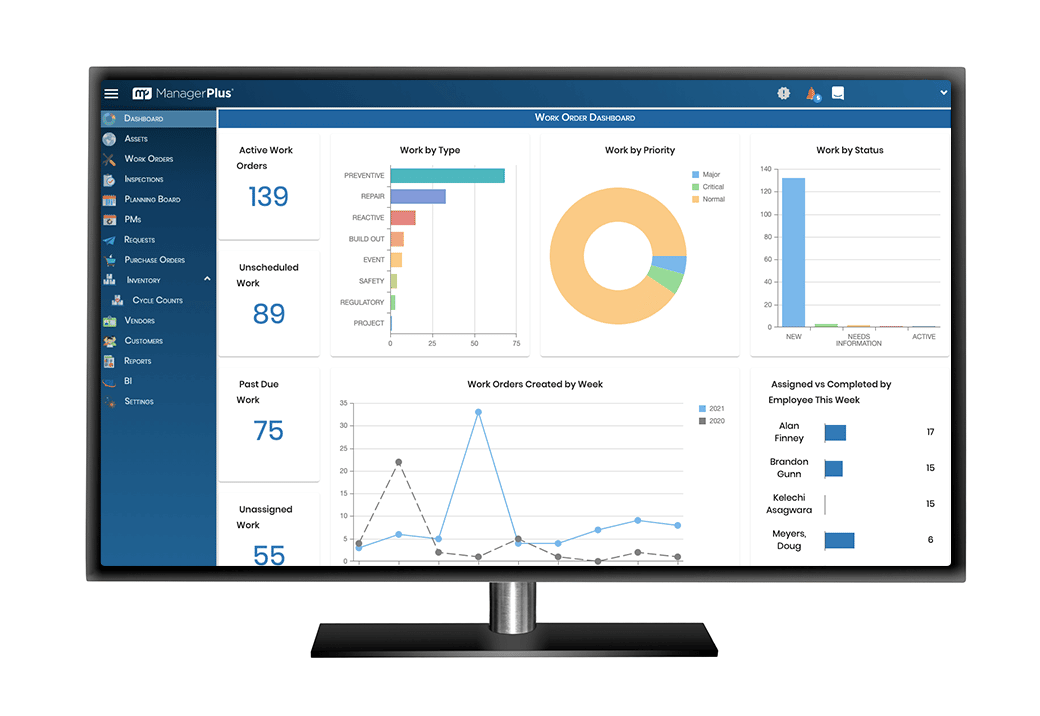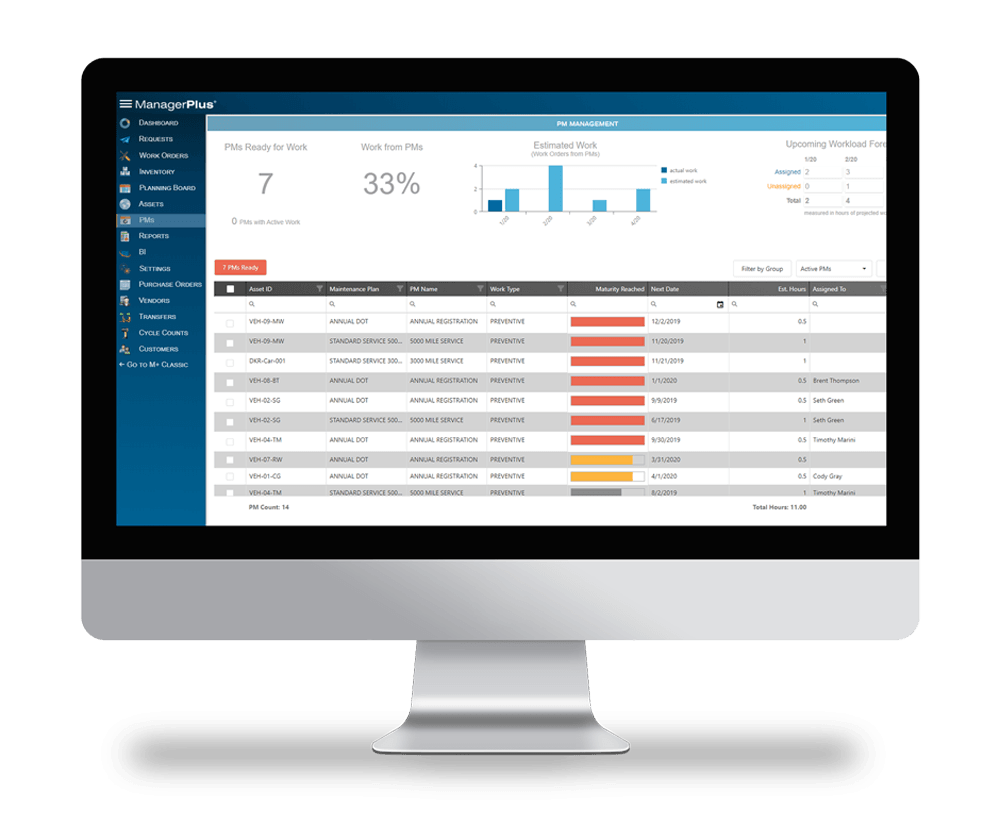For your construction company, your equipment is critical on every project. When it goes down, everything stops and costs go up.
As an equipment manager, your company relies on you to keep the equipment up and running by making informed decisions about repairs and replacements.
Let’s look at what it takes to effectively manage construction equipment.
What is construction equipment management?
In broad terms, construction equipment management is essentially evaluating the efficiency of your construction equipment fleet in relation to the cost of current projects. You’re looking to balance the usage costs of operating your equipment against the timelines and income from the projects you have under contract.
As a construction manager, you need to be able to make practical, informed business decisions about your equipment to ensure you’re getting the most return on your investment. The ultimate goal is for the equipment to pay for itself and then some.
You’ll want to evaluate both your entire fleet of equipment and your individual assets to make sure you’re using everything as effectively as possible.
The goal of evaluating your entire fleet is to answer questions like:
- Do I need new equipment?
- Is there any equipment or add-on I need to replace?
- Do I have any under-utilized or damaged equipment that I need to get rid of?
Evaluating your equipment individually can help you answer these questions if you’re using the right tools. Construction equipment management software is the best way to calculate cost-effectiveness.
How do I manage construction equipment?
Most construction companies estimate that about 20% of their costs are related to equipment, so managing it effectively is critical. Poorly managed equipment can lead to delayed projects, extra costs, and worst of all, potential safety hazards.
There are several aspects to effective construction equipment management:
- Capturing and using data
- Managing maintenance
- Ensuring equipment availability
- Controlling total cost of ownership (TCO)
- Leveraging equipment management software
Each of these components is a piece of the puzzle that you need to optimize your construction equipment and ensure you’re getting the most bang for your buck.

Data is king
You might have heard that phrase before, but it is more true than ever thanks to the new industrial revolution. The rise of the Internet of Things (IoT) has given equipment managers access to massive amounts of data, and construction management software can help you analyze that data for reliable, actionable business intelligence.
Most equipment managers use equipment-based telematics and GPS trackers to gather the data they need. These sensors provide run times, mileage, and other important information to help determine the best way to manage the equipment.
There’s more to it than just numbers, though. Data is only useful if you can trust it and then know how to act on it.
Preventive maintenance prevents shutdowns
That old saying is true, “Proper planning prevents poor performance,” and it’s especially true in the world of equipment management; preventive maintenance is the most cost-effective method to keep your equipment running better, longer.
In basic terms, preventive maintenance is when you use the data you’ve collected on your equipment to anticipate when parts might fail and then repairing or replacing them before that happens. A common example is the oil in a truck. From all the data we have gathered over decades of operating vehicles, we have a pretty good idea of when engine oil should be replaced so the engine doesn’t seize.
You can apply this same strategy to almost any piece of equipment. Not every asset goes well with preventive maintenance, but with the majority of construction equipment, you can see real benefits from the preventive maintenance strategy.

Equipment availability
It goes without saying that the more equipment you have available to use, the faster you can complete a project. The last thing you want is for your team to be standing around a job site waiting on a piece of equipment.
One of your goals as a construction equipment manager is to keep as much of your equipment up and running for as long as possible. The easiest way to do this is to keep up to date with your regular maintenance.
Timely inspections are vital to keeping to your regular maintenance schedule, but you also need to make sure you can access inspection reports easily and quickly to keep them up to date. If you’re relying on paper or verbal inspection reports to make sure your equipment is in good shape, you’ll almost always be operating on inaccurate information, and there’s a good chance the team is going to miss critical maintenance work.
This is another place where construction management software can be extremely useful. With most programs, you can store inspection reports in the cloud so they’re readily available and so you can quickly assign a technician to a job as soon as it’s requested.
Unplanned downtime can cost you money in more than one way. It can violate safety regulations which often results in fines, and it can harm your relationship with your client due to project delays, which can cut into your profits.
Total cost of ownership (TCO)
When managing any sort of equipment, it’s important to know the total cost of owning and operating it. TCO is one of the most common metrics for determining the cost-effectiveness of assets and is one of the best ways to determine when it’s time to replace equipment, and which equipment to replace it with.
To calculate your TCO of an asset, you’ll need to add up the purchase price, maintenance costs, and operating cost. Make sure to include things like insurance, registration fees, fuel costs, and every part of your maintenance program that has an associate cost. Don’t forget to include the cost of downtime.
Keep in mind that when it comes to TCO, no two assets are used exactly the same way. You don’t use a bulldozer the same way you use a crane truck. For that, you’ll want to calculate the asset utilization or cost per hour.
Knowing the TCO for your assets is vital to your equipment management program because it helps you plan ahead and spot and mitigate potential issues that can lead to additional costs. It also helps you be better prepared to purchase new assets in the future as you’ll have a more comprehensive list of things to look for when you’re deciding what to buy.
Technology is one of your best assets
With all the different aspects of construction equipment management to keep in mind, it can certainly feel overwhelming at times. That’s where technology can help.
We’ve already covered the importance of collecting data, but just having the data doesn’t do much good. You need a way to manage it effectively and you need something to help you make sense of it all and tell you what you don’t know.
Construction equipment management software, also known as EAM (enterprise asset management) software, is the tool to help you do just that. Using the sensors we already talked about to collect data, EAM software can organize this data and distill it so you can use it to better manage your assets.

For example, details like maintenance and repair inventory can be tracked in real-time so you know exactly what parts you need and when, so you don’t have to waste money carrying a bunch of inventory you don’t use very often.
You can also use EAM software to develop, implement, and optimize your preventive maintenance program. Once you’ve added all your equipment into the program, you can set your maintenance schedule around metrics like you decide whether that’s manufacturer recommendations, miles driven, or hours operated.
One of the best things you can do with EAM software is cut your costs and improve your return on investment. You can generate detailed reports based on all your equipment data that tells you exactly how much each asset is costing you over time. Once you know that, you can see where there might be places you can improve your equipment management or even if it might be time to replace an asset that’s costing you more than it should.
Overall, if you want to see a solid ROI, invest in a good, cloud-based EAM software solution that is mobile-friendly so you can take it with you anywhere.
Where do I start?
The best place to start any construction equipment management program is by doing your research and talking to experts. The team behind ManagerPlus EAM software has been managing assets for over twenty years and has the knowledge and expertise you need to boost asset uptime and productivity. They will listen to you and the challenges your business is facing and find a solution that fits your needs and your budget. They’ll even customize an implementation and training program specifically for you and your team.
What do I need to know?
Construction equipment management is evaluating the effectiveness of your equipment in relation to the costs of your current and ongoing projects. You want to balance the cost of owning and operating your equipment against the income you have coming in from your contracted jobs.
To key components of equipment management are:
- Capturing and using data
- Managing maintenance
- Ensuring equipment availability
- Controlling total cost of ownership (TCO)
- Leveraging equipment management software
Equipment management software help you manage every aspect of your equipment management program and is easy to implement and use. Use it to take control of your maintenance programs, improve your equipment uptime, and improve your company’s bottom line.


